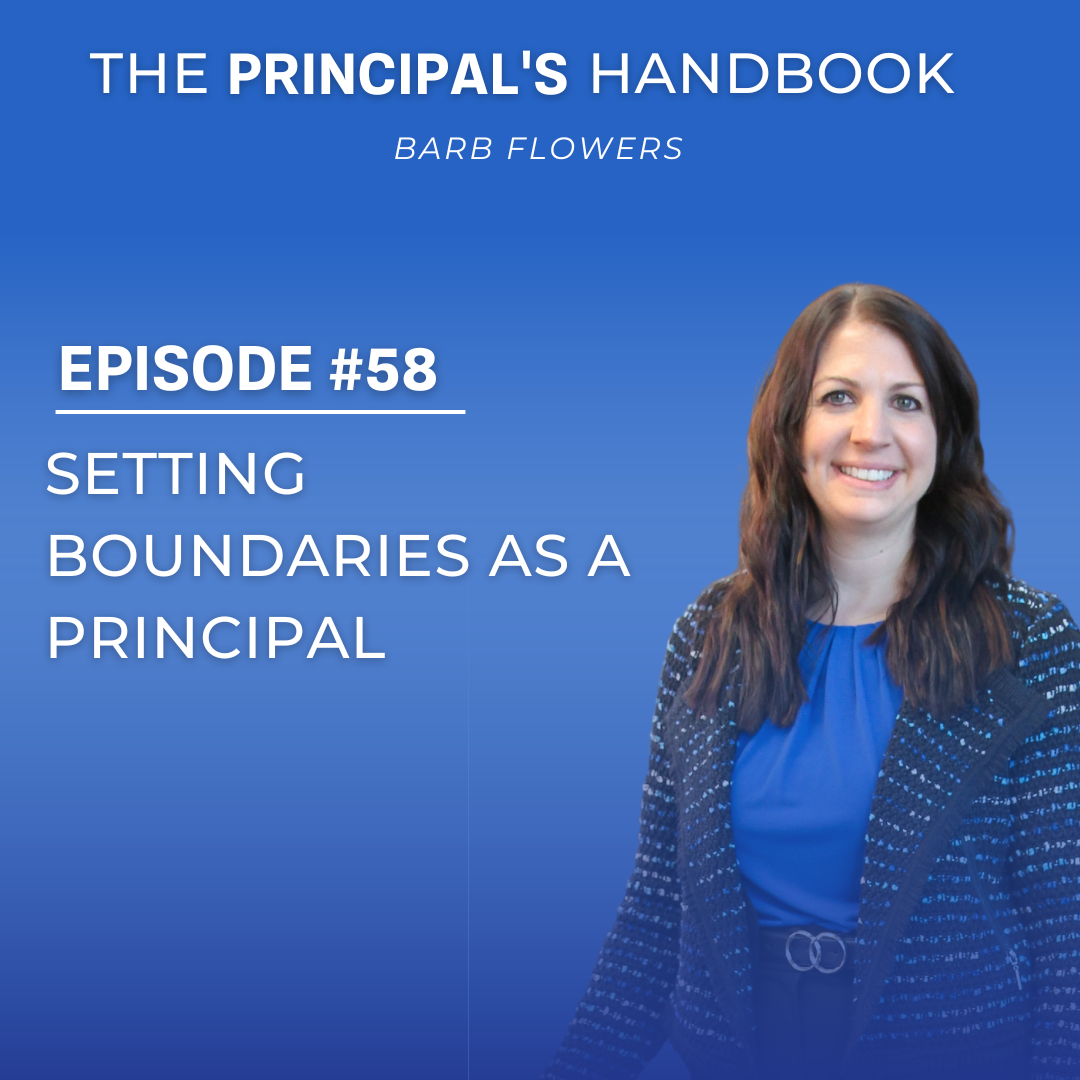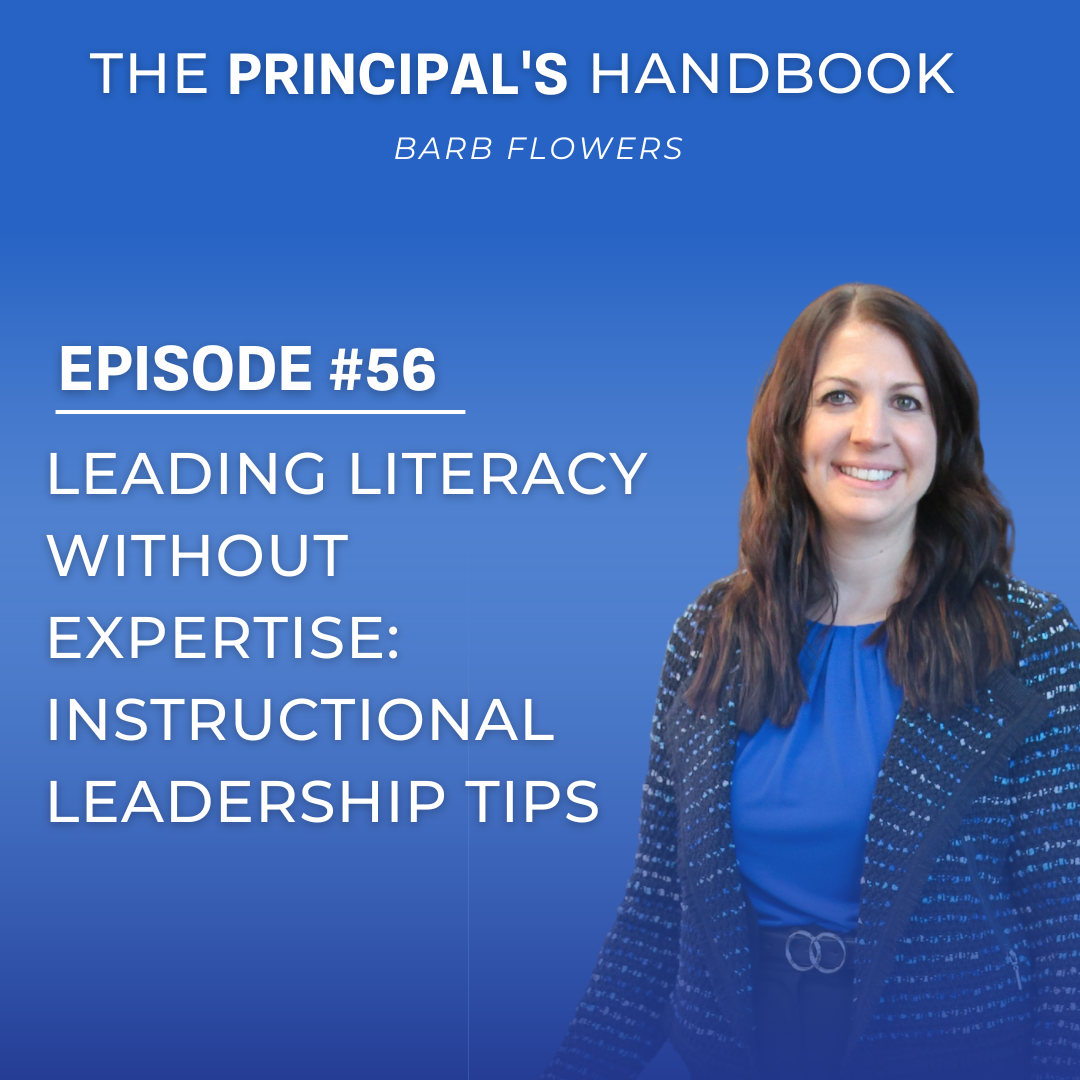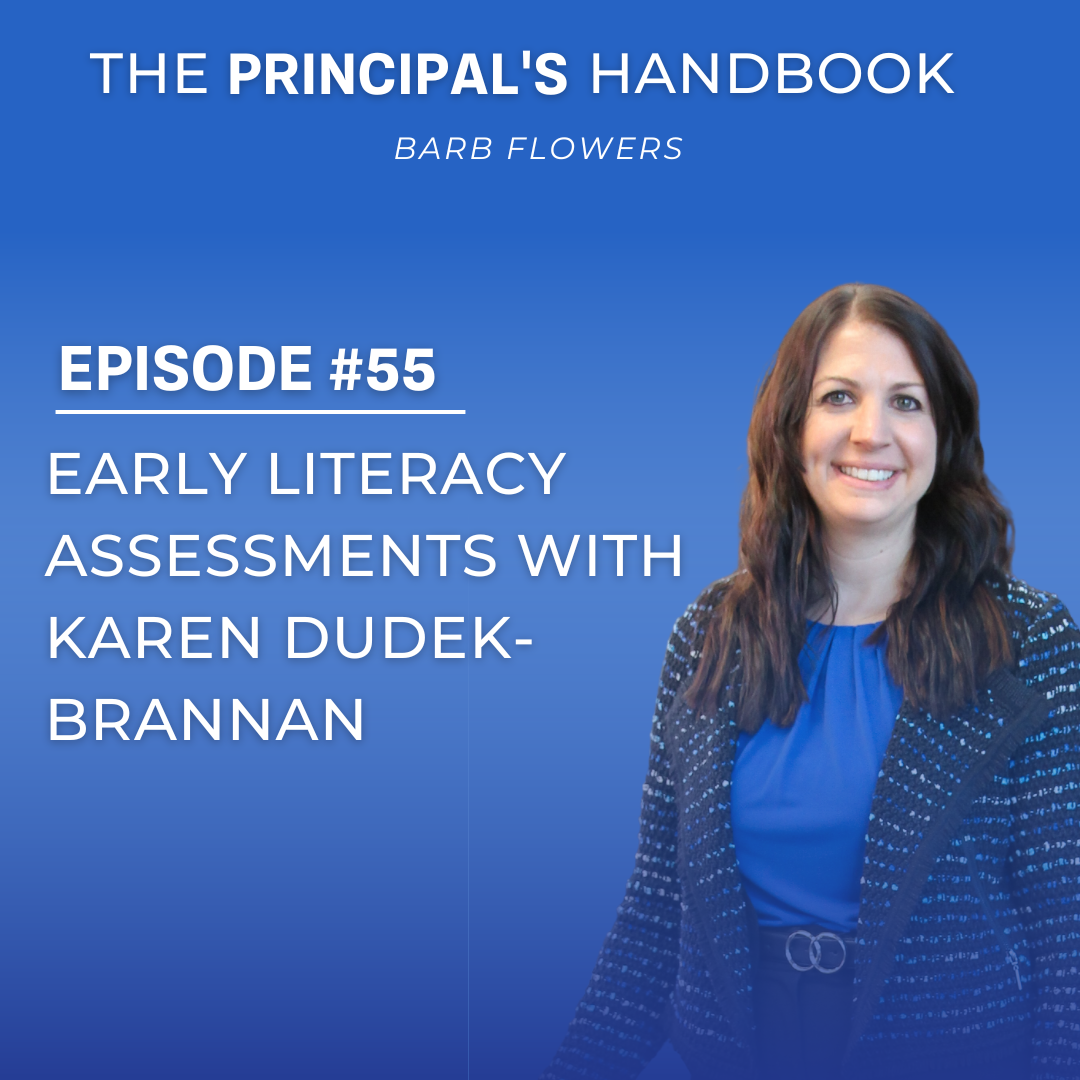00:00:00]
In today’s episode, I want to talk about setting personal boundaries as a principal. That’s all coming up next right here on The Principal’s Handbook. Stay tuned.
Welcome to The Principal’s Handbook, your go-to resource for principals looking to revamp their leadership approach and prioritize self-care. I’m Barb Flowers, a certified life coach with eight years of experience as an elementary principal. Tune in each week as we delve into strategies for boosting mental resilience, managing time effectively, and nurturing overall wellness. From tackling daily challenges to maintaining a healthy work-life balance, I’m Barb Flowers. We’ll navigate the complexities of school leadership together. Join me in fostering your sense of purpose as a principal and reigniting your passion for the job. Welcome to a podcast where your well-being is the top priority.
Welcome, everyone! Today, we are going to be talking about setting personal boundaries as a principal. This topic is crucial for principals who want to achieve work-life balance. Now, work-life balance isn’t about dividing your time 50/50; it’s about being fully present in everything you do—at work, at home, and in your personal life. But you cannot do this without boundaries.
As a principal, it can be really hard to set boundaries. You’re in charge of your building, and it often feels like you should always be available. I get it—I’ve been there. It’s not easy to put your phone down or get off your email. But setting boundaries is an important skill. Having those boundaries will help you feel more fulfilled and happier. You need time to be fully present with your family, for self-care, or to enjoy time with friends. Without this, you’re at risk of burnout.
It’s also important to note that there are moments when boundaries go out the window. There will be true emergencies where you have to step in. We all know that as principals, emergencies can’t wait, whether it’s a crisis with a student or a major incident. Boundaries are necessary, but there will be times when they have to be flexible. However, we cannot let these emergencies become an excuse to abandon boundaries completely. We can maintain boundaries but still be available when emergencies arise.
Real-Life Examples of Emergencies
I’ve had my share of emergencies, such as when I had to talk to school counselors, parents, and even the police after a student expressed suicidal thoughts. There was another time when two students went missing after school, and we had to coordinate with the police to find them. These situations were true emergencies that required my immediate attention. It’s important to be available for these moments, but also remember that boundaries are there to protect your well-being.
What is a Boundary?
The definition of a boundary is a dividing line, a limit, or an end. Personal boundaries are the rules we set for ourselves within relationships. When we talk about boundaries today, we’re referring to the limits you set within your relationships at work.
Who and What to Set Boundaries With
Your boundaries are personal, and they’ll look different for everyone. As I talk through these examples, think about your boundaries, why you want to set them, and what that looks like for you. Boundaries are very personal, but some are necessary for your well-being, while others are more professional. Understanding both types of boundaries will help you create a structure for your day and interactions.
Today, I’m focusing on boundaries with three groups: parents, staff, and colleagues. We can also set boundaries with our bosses or superintendents, but that conversation is a little different. We’ll stick to discussing parents, staff, and colleagues today.
Boundaries with Parents
One of the biggest boundaries you’ll need to set with parents is deciding whether or not you want to be friends with them on social media. This is a huge decision because once you accept one parent’s friend request, it opens the door for others. You have to decide whether you’re comfortable with that. If you don’t post often, it might not matter, but if you share personal photos, you might not want parents to see that.
Another important boundary is whether you call parents on your personal cell phone. Many districts provide principal cell phones, but if you’re like me and didn’t have one, you’ll have to decide if it’s okay to call parents from your personal phone. I always called in emergencies but made sure to respect the boundary of not giving out my personal number for routine contact. If you’re not comfortable with this, consider using a separate line or service to protect your personal number.
How do you want parents to meet with you? Are you okay with them showing up unannounced, or do you want to have scheduled meetings? As principals, we know that not every concern is an emergency, but parents may not always understand that. It’s important to set expectations around how you handle meetings and follow-ups.
What if a parent is disrespectful? Have a plan in place for how you’ll respond. Will you ask them to come back at another time? Will you get another adult involved? These situations can get heated, and having a clear boundary ahead of time will help you stay calm and in control.
Finally, consider how you’ll handle communication. Are you going to stop checking emails after 5 p.m.? Do you want to respond within 24 hours? Setting these expectations will not only help protect your time but will also set clear boundaries for parents.
Boundaries with Staff
Setting boundaries with staff is critical. Make it clear at the beginning of the year that you’re unavailable after a certain time unless there’s an emergency. If you don’t want to receive texts or calls after hours for non-urgent matters, be sure to communicate that. Make sure your staff understands what qualifies as an emergency so they feel comfortable reaching out when needed but also respect your personal time.
Social media is another area where boundaries are important. Do you want to be friends with staff on social media? I had some staff members on my personal social media, but I always made it clear that if I saw something inappropriate, I would address it. So, be clear about your expectations for social media and professional conduct.
It’s also important to model these boundaries. If you’re emailing staff at all hours, it’s hard to expect them to respect their own boundaries. Be intentional about when and how you communicate. If you’re setting boundaries around work-life balance, make sure you’re living by them, so your staff can see you model the behavior they should also adopt.
Boundaries with Colleagues
When it comes to colleagues, every relationship is different. Some people want to become close friends with their colleagues, while others prefer a more professional relationship. Whatever you decide, make sure to communicate your preferences. If you don’t want to participate in after-hours group texts, let your colleagues know. If you don’t want to share personal details about your life, that’s okay—just be clear about it.
Setting and Modeling Boundaries
Ultimately, the boundaries you set are up to you. But they are essential for creating a healthy, sustainable work environment. I personally found that by setting clear boundaries around my email and when I was available, I was able to model healthy habits for my staff. I also encouraged them to do the same. It’s about finding a balance where you can be fully present at work and in your personal life.
Remember, if you’re struggling with setting boundaries, it’s okay to seek help. I offer one-on-one coaching to help principals establish boundaries and regain balance in their professional and personal lives.
I’ll include links in the show notes to helpful resources on boundary-setting. If you’re listening on Apple, please scroll down and leave a review—reviews help others find the podcast. And if you know a principal who’s struggling with boundaries, share this episode with them.
As a principal, you have the power to shape your life according to the mindset you choose. I hope you have a great week and I’ll see you back here next time.






